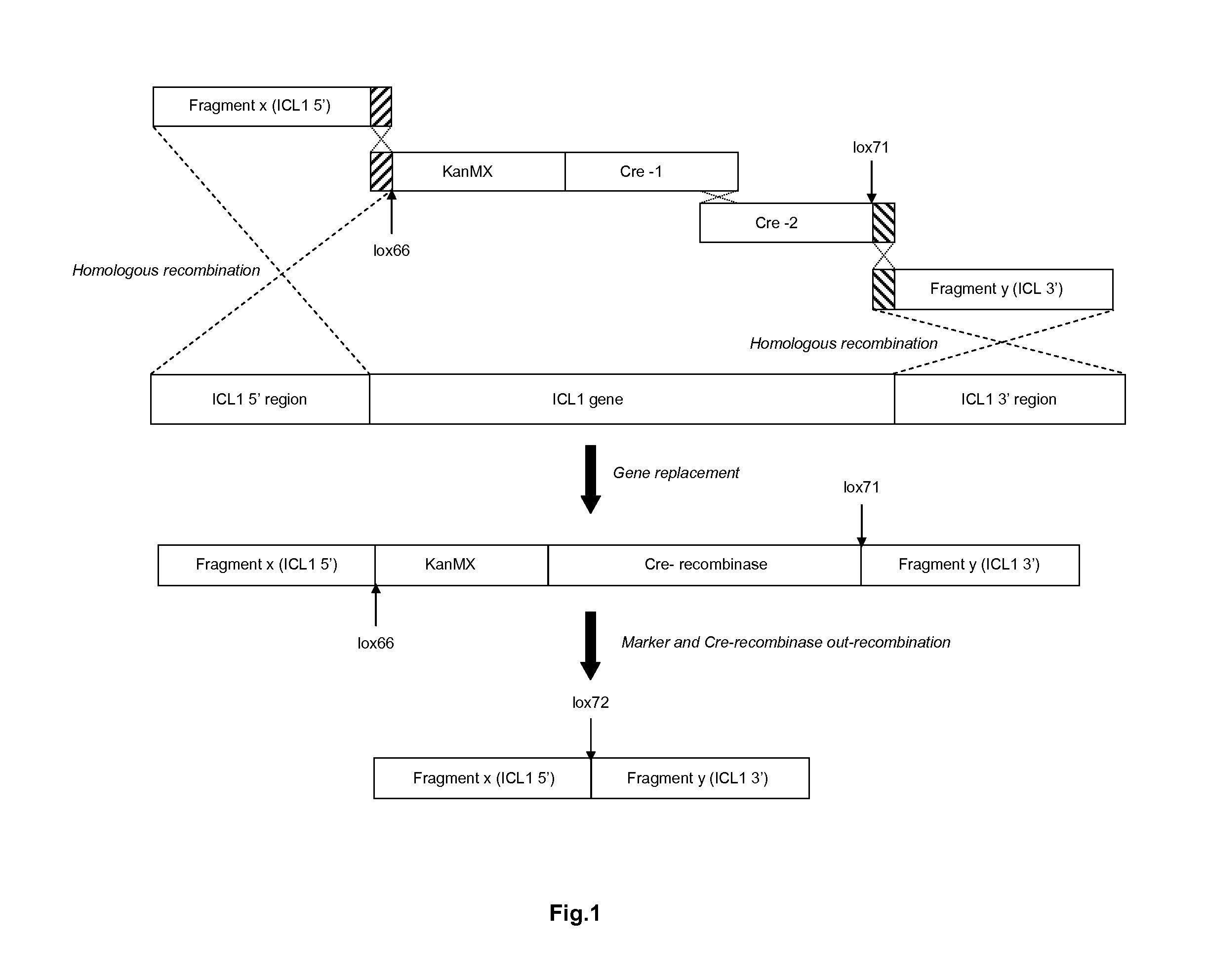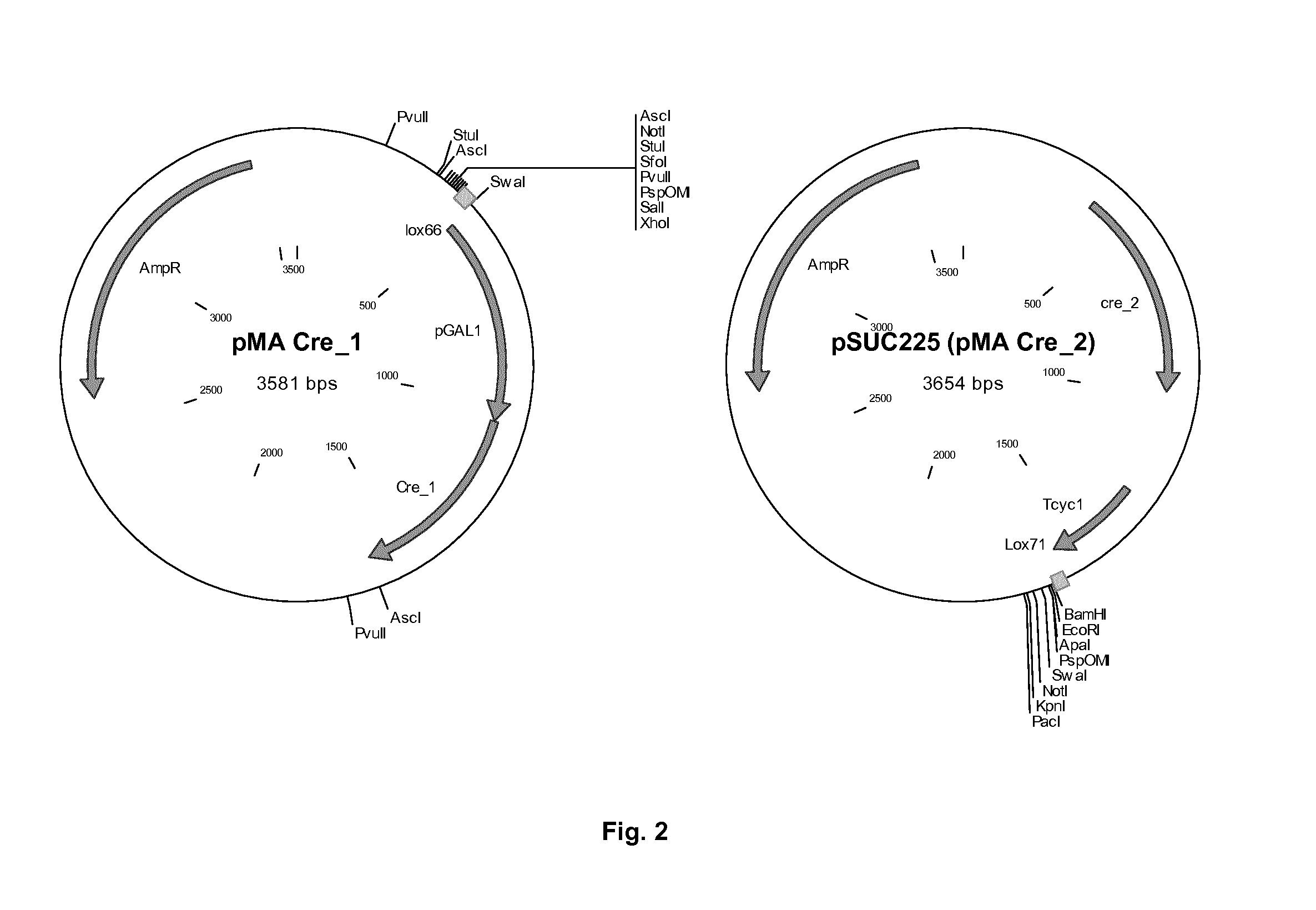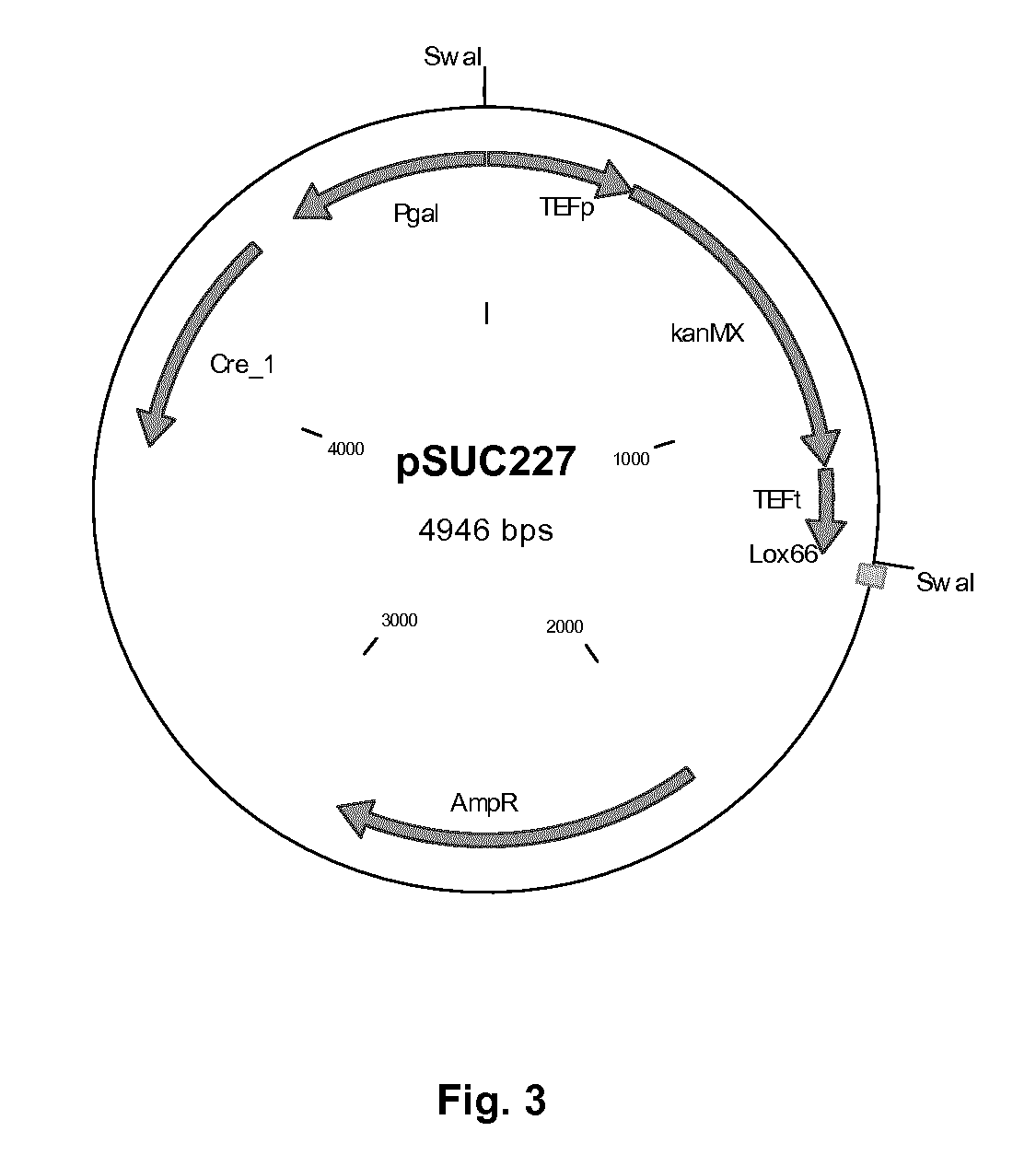Recombination system
- Summary
- Abstract
- Description
- Claims
- Application Information
AI Technical Summary
Benefits of technology
Problems solved by technology
Method used
Image
Examples
example 1
A Method for Efficient Integration and Out-Recombination of a Marker Using a “Split Cre / lox” Approach
1.1 General Principle of Split Cre Recombinase Integration
[0166]The original method using Cre / loxP, described by Gueldener et al (1996), consists of a three step process. Step one is transformation of the marker surrounded by two loxP sites integrating it in the genome, which may result for example in the deletion of a gene. Step two is transformation of a plasmid containing the Cre recombinase under control of the GAL1 galactose inducible promoter. After induction of the Cre recombinase with galactose and removal of the marker via recombination of the loxP sites, the third step consists of removal of the plasmid which is often less straightforward than expected. The method described in this example, “split Cre recombinase integration” or “direct Cre recombinase integration” (DCI), is more efficient and much faster. This approach for genomic integration and removal of a selection mar...
example 2
2.1 Synthesis and Preparation of the Split Cre / loxP Fragments 5′Split CRE and 3′Split CRE
[0175]A candidate for disruption (epo gene) was identified in the genome sequence of A. niger CBS513.88. All nucleotide sequences for A. niger genes and their genomic context can be derived for example from NCBI (http: / / www.ncbi.nlm.nih.gov / ) of EMBL (http: / / www.ebi.ac.uk / embl / ). The epo gene is encoded by An08g04490. The strain Aspergillus niger GBA 302 (ΔglaA, ΔpepA, ΔhdfA) is used herein as recipient strain in transformations. Construction of GBA 302 is described in WO2011009700.
[0176]Gene replacement vectors were designed according to known principles and constructed according to routine cloning procedures as also described in EP635574B and WO 98 / 46772. In essence, these vectors comprise approximately 1-2 kb flanking regions of the respective ORF sequences, to target for homologous recombination at the predestined genomic loci. They may contain for example the A. nidulans bi-directional amdS...
PUM
 Login to View More
Login to View More Abstract
Description
Claims
Application Information
 Login to View More
Login to View More - R&D Engineer
- R&D Manager
- IP Professional
- Industry Leading Data Capabilities
- Powerful AI technology
- Patent DNA Extraction
Browse by: Latest US Patents, China's latest patents, Technical Efficacy Thesaurus, Application Domain, Technology Topic, Popular Technical Reports.
© 2024 PatSnap. All rights reserved.Legal|Privacy policy|Modern Slavery Act Transparency Statement|Sitemap|About US| Contact US: help@patsnap.com










